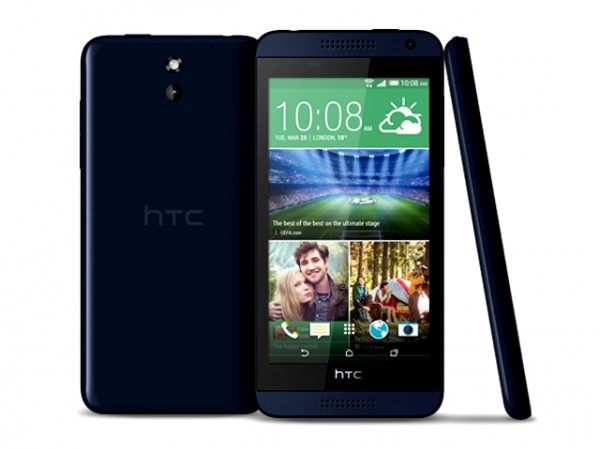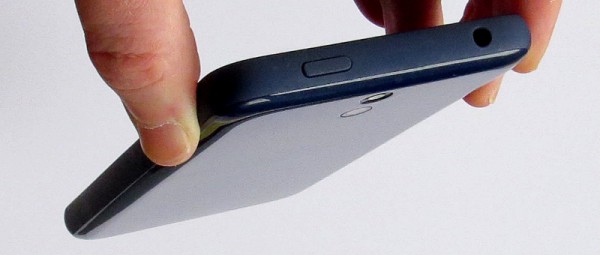HTC Desire 610: A not-so-good Android smartphone [Review]

HTC has been extremely busy recently in terms of unleashing handsets upon us. Over a period of just a few weeks I have reviewed the flagship HTC One M8, the smaller format HTC One mini 2, and the HTC Desire 816. Now, with barely a pause for breath following those last two reviews, here comes the HTC Desire 610.
Styled by HTC as a good value, entertainment-focused handset, the Desire 610 costs around £235. It shares a lot of design features with its more expensive, higher specified cousin the Desire 816, which will set you back close to £300. So, if you need to save money but like what the Desire 816 has to offer, is this handset a good buy?
Well, other handsets coming in around this price include the Huawei Ascend P6 (recently succeeded by the Ascend P7), Samsung Galaxy S4 mini from last year, and HTC Desire 601, which despite being a 2014 handset is being replaced by the Desire 610. And we must never rule out the much lower cost Motorola Moto G with its new update to 4G, plus, of course, there are other phones floating around in this price range.
The overall look of this handset is not HTC's finest moment. While I waxed lyrical about the metal chassis and curved back of the One M8, the design here is a bit meh. In large part that's down to two factors.
There's a full 21mm of chassis between the bottom edge of the screen and the bottom edge of the phone, and an additional 17mm of chassis between the top edge of the screen and the top of the phone. Add in 5mm of screen bezel down each of the long edges and you'll see that this is a handset with a 4.7-inch screen which is lost in a sea of front chassis. It's not a good look, in my view. Moreover it makes for a relatively big phone -- compare 70.5 x 9.6 x 143.1 mm (WxDxH) with the 68.8 x 6.5 x 139.8 (WxDxH) of the 5-inch screen-bearing Huawei Ascend P7, for example.
Now, a fair bit of that upper and lower space is occupied by a double row of speaker grilles. Yep, the Desire 610 has stereo speakers and BoomSound to augment the quality of the sound output. BoomSound is not as well implemented here as in the flagship One M8 or the Desire 816 though. While I found the volume would crank up as high as I needed it, quality was decidedly iffy with a lot of treble and a lack of bass tones. If my ears are accurate, it seems BoomSound is not universally brilliant with the Desire 610, less impressive than the Desire 816, which in itself isn't as good as the superb One (M8).
The other design factor that turns me off is the way the non-removable backplate is quite clearly a separate part of the casing. I mentioned this design feature in the Desire 816 and here we have a very similar effect of a shiny backplate and a matte plastic finish to the handset edges. It's a combination that forces you to look at it, and when you do you'll see the join between back and edges. Not everyone will dislike this, of course, but it's not to my taste.
The Desire 610 can be had in navy, white, or red, and the shiny backplate of my navy sample attracted quite a lot of finger grease. On the plus side I wasn't able to bend this phone in my hands as easily as I was the Desire 816. It is smaller overall than that phone which is probably a factor, but whatever the reason it feels more robust.
Button placement is different to that of the Desire 816. The power button has moved from the left edge onto the top, which it shares with the headset slot. The volume rocker is on the right edge and the hinged cover protecting a slot for both your nanoSIM and your microSD card is on the left edge. These two are transposed on the Desire 816. It is easy to lift the cover and hotswap microSD cards thanks to a small nick on the cover, into which you can easily get a fingernail.

The screen resolution and quality are in okay-but-not-great territory. The resolution of 960 x 540 pixels is way out of date, and 234ppi is low. I could definitely see a certain fuzziness to text, and you might want to steer clear if you do a lot of reading on your phone (whether that's websites, eBooks, email or other types of text). Viewing angles aren't great, and like the backplate, the screen seems to collect finger grease.
For looking at video and playing games the screen is passable, though obviously it looks less than stellar when set against top-end handsets. Indeed, with this handset, the display may be the deal beaker that puts people off the Desire 610.
The quad-core Qualcomm Snapdragon 400 runs at 1.2GHz and with 1GB of RAM backing it up it seemed pretty slick. HTC has built the Desire 610 with 4G and NFC on board, and although it is not mentioned in the specifications, USB On The Go is supported too, so you can read data, for example music, from a USB stick with a microUSB connector.

The 8 megapixel main camera does a fair job. There's nothing ground-breaking about it, but access to manual ISO and other settings will appeal to many people, and there are some nice filters, too. The 1.3 megapixel front camera, now called the selfie camera in HTC's camera app across its handsets, has the three second self-timer that's become a standard feature for HTC.
With this phone, the battery can also be said to be fair. It got me through a day of normal use, but if you are a keen gamer you might feel the need for a juice boost during the day.

There's just 8GB of built-in storage, and by the time Android 4.4, HTC Sense 6 and HTC's other bits and bobs have snaffled their share there is just 3.6GB left for you. Sense 6 comes with its usual features including the news and social aggregator BlinkFeed. HTC has also included Polaris Office 5 which can be used to create Microsoft Word, Excel and PowerPoint documents, and save to PDF, alongside a good note-taking app called Scribble. If you want to use these seriously you might be better off looking for a device with a bigger screen. They're on the Desire 816, for example.
Verdict
I liked the HTC Desire 816 a lot, but the lower cost, lower specified Desire 610 seems to suffer from some badly made choices in order to reach its price. The screen resolution is a particular annoyance, and the chassis design does the phone no favours, with the screen being swamped in a lot of bezel. HTC might want to consider how it markets BoomSound, as well -- it has had excellent feedback from reviews of the high-end One M8 (including mine), but here the quality simply isn't replicated.
Specifications
| Manufacturer and Model | HTC Desire 610 |
| Network | 4G |
| Processor | 1.2GHz quad-core Qualcomm Snapdragon 400 |
| Ram | 1GB |
| Memory | 8GB (3.6GB accessible) |
| Memory expansion | microSD |
| Display | 4.7in, 960 x 540 pixels, 234ppi |
| Main camera | 8 megapixel |
| Front camera | 1.3 megapixel |
| NFC | Yes |
| Wi-Fi | Yes |
| GPS | Yes |
| FM radio | Yes |
| Battery | 2,040 mAh |
| Size | 70.5 x 9.6 x 143.1mm (WxDxH) |
| Weight | 143.5g |
| OS | Android 4.4 |
Published under license from ITProPortal.com, a Net Communities Ltd Publication. All rights reserved.